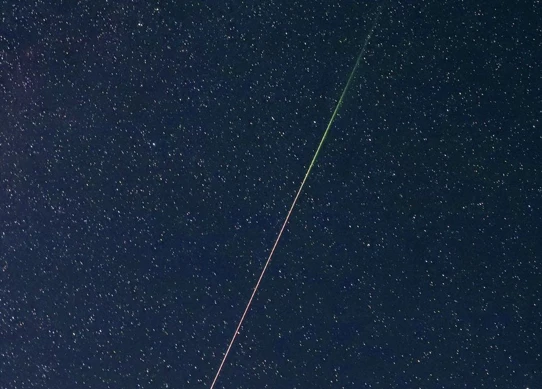Unexplained Phenomena: Strange Meteor Shower Events
When it comes to celestial events, there is a sense of wonder and intrigue that captivates our imagination. Meteor showers, in particular, have always fascinated scientists and stargazers alike. These mesmerizing displays of shooting stars are a common sight in the night sky, but every now and then, something extraordinary happens. Unexplained phenomena occur during these meteor showers, leaving us perplexed and searching for answers. In this article, we will delve into the strange and mysterious occurrences that have taken place during meteor shower events, exploring their unusual characteristics, unexplained patterns, and the accounts of bewildered eyewitnesses. We will also delve into theories and speculations regarding their possible extraterrestrial origins, time and space anomalies, and geomagnetic disturbances. Join us on this journey to uncover the enigma of strange meteor shower events.
Contents
- The Science of Meteor Showers
- Unexplained Phenomena
- Theories and Speculations
- Well-known Strange Meteor Shower Events
- Conclusion
-
Frequently Asked Questions
- 1. What causes the radiant point of a meteor shower?
- 2. How can I best observe a meteor shower?
- 3. Are meteor showers dangerous?
- 4. How often do meteor showers occur?
- 5. Can you predict the exact number of meteors during a shower?
- 6. Are meteor showers visible in both hemispheres?
- 7. How fast do meteors travel?
- 8. Can you hear the sound of meteors?
- 9. How long do meteor showers last?
- 10. Can I make a wish on a shooting star?
- References
-
Frequently Asked Questions
- FAQs about Unexplained Phenomena: Strange Meteor Shower Events
- Curious about strange meteor shower events and unexplained phenomena? Here are some frequently asked questions to shed some light on the subject:
- 1. What makes a meteor shower event strange?
- 2. Can meteor showers occur at any time?
- 3. Are there any noticeable differences between regular meteor showers and strange meteor shower events?
- 4. Have there been any documented cases of unexplained patterns or formations during meteor shower events?
- 5. What do eyewitness accounts reveal about strange meteor shower events?
- 6. Are there any theories regarding the extraterrestrial origins of strange meteor shower events?
- 7. Could time and space anomalies be responsible for the occurrence of strange meteor shower events?
- 8. How do geomagnetic disturbances play a role in strange meteor shower events?
- 9. What is the Perseid Enigma?
- 10. What is the Leonid Mystery?
- References
- Read More
The Science of Meteor Showers
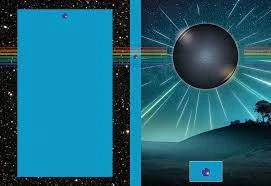
Meteor showers are mesmerizing celestial events that occur when Earth passes through the debris left behind by comets or asteroids. These debris, also known as meteoroids, are essentially fragments of rock and ice traveling through space. When a meteoroid enters Earth’s atmosphere, it undergoes intense heat and friction, causing it to vaporize and create a streak of light in the sky – what we commonly refer to as a shooting star or meteor. The scientific explanation behind meteor showers lies in the orbits of comets and asteroids. As these objects orbit the sun, they leave behind trails of debris along their paths. When the Earth’s orbit intersects with these trails, we witness a meteor shower. These showers often have specific names based on the constellation from which they appear to originate, such as the Perseids or the Geminids. The predictable nature of meteor showers allows astronomers to calculate the peak times and locations to observe these celestial spectacles. Meteor showers are not only fascinating to observe, but they also provide valuable insights into the composition of comets and asteroids. Scientists can analyze the light emitted by meteors to determine their chemical composition and gain a better understanding of the building blocks of our solar system. Studying meteor showers also helps us track the paths and orbits of potentially hazardous asteroids that could pose a threat to our planet. With advancements in technology, astronomers can now capture detailed images and data during meteor showers, contributing to ongoing scientific research and furthering our knowledge of the cosmos.
1.1 What are meteor showers?
Meteor showers are captivating celestial events that occur when Earth’s orbit intersects with the debris trails left behind by comets or asteroids. These debris, known as meteoroids, are fragments of rock and ice that travel through space. When a meteoroid enters Earth’s atmosphere, it experiences intense heat and friction, causing it to vaporize and create a streak of light in the sky – what we commonly refer to as a shooting star or meteor. Meteor showers occur when Earth passes through a concentrated region of debris, resulting in a higher frequency of meteors within a specific period. Often, meteor showers are named after the constellation from which they appear to originate. For example, the Perseids meteor shower appears to radiate from the constellation Perseus. Meteor showers are predictable events, and astronomers can calculate the peak times and locations for optimal observation. These dazzling displays provide opportunities for stargazers and scientists to witness the beauty of the cosmos and unravel the mysteries of our universe.
1.2 How do meteor showers occur?
Meteor showers occur when Earth passes through the debris left behind by comets or asteroids. The process begins with these celestial objects orbiting the Sun in predictable paths. As they travel, they leave behind a trail of debris, which can consist of dust, rocks, and ice. When Earth’s orbit intersects with one of these debris trails, the particles enter our planet’s atmosphere. The speed at which these particles travel, combined with the friction and heat generated upon entry, causes them to vaporize and create the dazzling lights we observe as shooting stars or meteors. The exact timing and intensity of a meteor shower depend on various factors, including the size and density of the debris trail, the angle at which Earth’s orbit intersects, and the speed of the particles. Some meteor showers are more active and well-known, occurring annually around the same time, while others are less predictable. On rare occasions, exceptionally intense meteor showers, known as meteor outbursts, can occur when Earth encounters a particularly dense debris field. These events can result in a dramatic increase in the number of visible meteors in a short period. Meteor showers are a fascinating result of the intricate dance between celestial bodies and our planet’s position in space. By studying the mechanics of meteor showers, scientists can gain valuable insights into the composition of comets and asteroids, as well as better understand the dynamics of our solar system. For more information on how planetary alignments can influence celestial events, you can refer to our article on planetary alignments and weather patterns.
1.3 Common meteor shower occurrences
Meteor shower occurrences are a regular phenomenon that captivates skywatchers worldwide. There are several notable and commonly observed meteor showers that take place throughout the year. One such shower is the Perseids, which peaks in mid-August and is known for its abundance of bright and fast meteors. Another well-known event is the Leonids, which typically occurs in November and is famous for producing periodic meteor storms with a high number of shooting stars. The Geminids, on the other hand, take place in December and are known for their diverse range of colors and slower-moving meteors. These are just a few examples of the many meteor showers that occur annually. It’s important to note that the visibility and intensity of meteor showers can vary based on factors such as the phase of the Moon, local weather conditions, and light pollution. To maximize the chances of witnessing a meteor shower, it is recommended to find a dark location away from city lights and to observe during the peak times as determined by astronomers. Keep in mind that meteor showers are a result of natural cosmic phenomena and should not be confused with astrological events, which are based on the positions of celestial bodies and their influence on personality traits and life events. While meteor showers offer an awe-inspiring display of shooting stars, they are unrelated to horoscopes or zodiac signs.
Unexplained Phenomena
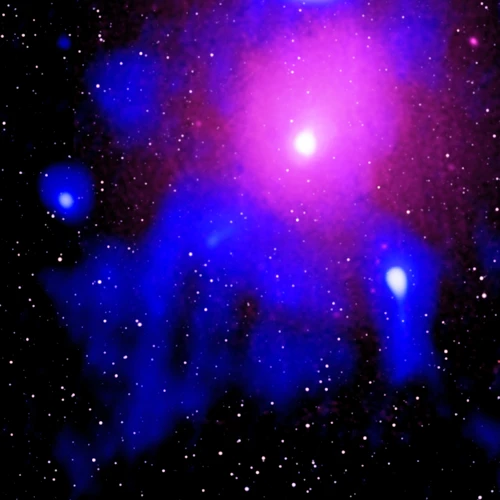
During meteor showers, there have been numerous instances of unexplained phenomena that have left astronomers and eyewitnesses baffled. One of the most intriguing aspects is the occurrence of strange meteor shower events that exhibit unusual characteristics. These characteristics can include meteors that move in unexpected directions, change colors, or display erratic behavior. While the majority of meteors during a shower follow a predictable trajectory, these anomalous events defy our understanding of the laws of physics.
Additionally, there are unexplained patterns and formations observed during some meteor showers. Some eyewitnesses have reported witnessing meteors forming geometric shapes, such as circles or triangles, as they streak across the sky. These formations seem to defy the random nature of meteor showers and raise questions about whether there is some underlying order or purpose behind these celestial phenomena.
Eyewitness accounts also contribute to the enigma surrounding meteor showers. Many individuals have reported witnessing strange and otherworldly sights during these events. Some have claimed to see meteors that seem to slow down or pause in the sky, while others have described encounters with unidentified flying objects coinciding with meteor showers. These stories create a sense of wonder and curiosity as we speculate about the potential connections between meteor showers and extraterrestrial activity.
These unexplained phenomena have led to various theories and speculations in an attempt to unravel their mysteries. Some theorists propose that these strange meteor shower events have extraterrestrial origins, suggesting that they could be evidence of advanced alien technology or communication attempts. Others explore the possibility of time and space anomalies, hypothesizing that these anomalies could disrupt the normal behavior of meteors and create the observed strange phenomena. Geomagnetic disturbances caused by interactions between Earth’s magnetic field and solar activity have also been proposed as a potential explanation for these unusual occurrences.
In the coming sections, we will further explore these theories and examine specific examples of well-known strange meteor shower events, shedding light on the perplexing nature of these phenomena and the ongoing quest for answers in the realm of the unknown.
2.1 Unusual characteristics of strange meteor shower events
When it comes to strange meteor shower events, there are certain characteristics that make them stand out from the regular displays. One unusual characteristic is the unpredictability of these events. While meteor showers usually occur at specific times and locations, strange meteor shower events often deviate from these patterns. They may appear when least expected or in different areas of the sky. Another intriguing characteristic is the presence of unusually bright or colorful meteors during these events. Eyewitness accounts often describe vibrant hues and intense brightness that surpass the typical white or yellow streaks. Some witnesses even claim to have seen meteors emitting multiple colors, creating a dazzling spectacle. Additionally, the speed of meteors during strange meteor shower events can also be significantly faster or slower than usual. Some eyewitnesses report seeing meteors that appear to move in slow motion, while others describe meteors streaking across the sky at incredible speeds, leaving a trail that lingers for an unusually long time. These peculiar characteristics of strange meteor shower events continue to puzzle scientists and fuel curiosity among skywatchers. While various theories and speculations abound, the true nature of these phenomena remains a mystery.
2.2 Unexplained patterns and formations
During some meteor shower events, witnesses have reported observing peculiar patterns and formations in the night sky that defy rational explanation. These unexplained occurrences have puzzled both scientists and sky gazers alike. One such phenomenon is the formation of parallel streaks or multiple trails left behind by individual meteors. Instead of a single, distinct streak of light, witnesses have reported seeing two or more parallel lines moving across the sky simultaneously. This phenomenon challenges our understanding of meteor physics, as the typical explanation for a meteor shower is the burning up of debris from a single source. Another intriguing pattern is the formation of geometric shapes created by the paths of meteors. Witnesses have described seeing meteor trails forming perfect triangles, lines, or even circular formations. These unusual geometric arrangements raise questions about the underlying mechanisms that govern the motion and interaction of meteoroids in the Earth’s atmosphere. Some speculate that these strange patterns may be influenced by external factors, such as planetary alignments or cosmic forces beyond our current understanding. While no conclusive evidence has been found to explain these patterns, they continue to spark curiosity and inspire further investigation. Perhaps future studies and technological advancements will unveil the mysteries behind these enigmatic meteor shower formations.
2.3 Stories of eyewitnesses
Eyewitness accounts play a crucial role in unraveling the mysteries surrounding strange meteor shower events. People from all walks of life have shared their perplexing and awe-inspiring experiences, recounting encounters with unidentified objects and unexplained phenomena during meteor showers. These stories often share common themes, with individuals describing unusual lights, colors, and sounds accompanying the meteor shower displays. Some eyewitnesses have reported witnessing sudden changes in the trajectory or speed of meteors, defying the known laws of physics. Others have claimed to see formations or patterns in the sky that seem orchestrated and deliberate, rather than random. These accounts raise intriguing questions about the nature of these events and the possibility of intelligent manipulation. While skeptics argue that these sightings can be attributed to atmospheric conditions or optical illusions, the sheer number of consistent testimonies leaves room for further investigation. In an age where technology allows for widespread documentation, videos, and photographs taken by eyewitnesses during these events provide additional evidence and fuel speculation. These firsthand experiences offer a unique perspective and inspire scientists and researchers to delve deeper into the unexplained phenomena that occur during meteor showers.
Theories and Speculations
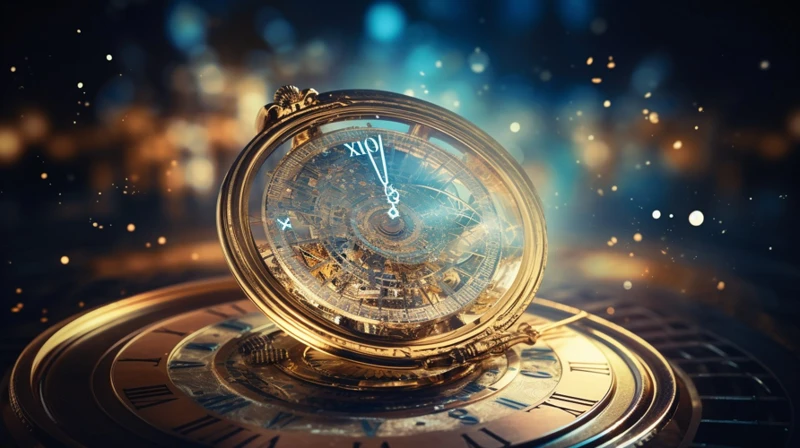
While meteor showers have a scientific explanation, strange meteor shower events often give rise to theories and speculations that go beyond the realm of conventional understanding. One of the most intriguing theories is the possibility of extraterrestrial origins. Some speculate that these unusual meteor shower events could be a result of advanced extraterrestrial civilizations manipulating celestial objects for unknown purposes. Another speculation involves time and space anomalies. It is suggested that these anomalous events could be caused by disruptions in the fabric of space-time, allowing for phenomena that defy our current understanding of physics. Geomagnetic disturbances have also been proposed as a potential explanation for these strange occurrences. The Earth’s magnetic field interacts with incoming meteoroids, and fluctuations in this magnetic field could lead to unusual trajectories and patterns in meteor showers. While these theories and speculations remain speculative, they ignite the imagination and curiosity of those seeking to unravel the mysteries of the universe. It is important to approach these theories with a critical mindset, considering the limitations of current scientific knowledge. However, they serve as a reminder that there is still much we do not understand about the vast cosmic tapestry that surrounds us.
3.1 Extraterrestrial origins
3.1 Extraterrestrial Origins
One intriguing theory regarding strange meteor shower events is their potential extraterrestrial origin. Some scientists and theorists propose that these phenomena could be the result of extraterrestrial activity or even the presence of unidentified flying objects (UFOs). While there is limited scientific evidence to support this claim, it continues to capture the imagination of many. The idea suggests that these unexplained patterns, formations, and characteristics observed during certain meteor showers may be manifestations of advanced technology or otherworldly beings. However, it is important to note that the scientific community generally approaches such theories with skepticism, as it lacks concrete evidence to validate extraterrestrial involvement. It is crucial to maintain a critical and objective perspective when exploring these possibilities. Nevertheless, the notion of extraterrestrial origins adds an air of mystery and excitement to the study of meteor showers, inviting further research and speculation. For those interested in the link between celestial events and astrology, these theories might spur thoughts of potential connections between planetary alignments and unexplained meteor shower phenomena. (Learn more about planetary alignments and horoscopes).
3.2 Time and space anomalies
Strange meteor shower events sometimes exhibit peculiar time and space anomalies that defy conventional explanations. One of the anomalies witnessed is a sudden increase or decrease in the speed of meteoroids during a shower. These variations in velocity can be baffling, as they seem to contradict the laws of physics governing celestial bodies. Additionally, there have been instances where meteor showers display irregular patterns in their trajectory, with meteors diverging from the expected radiant point. This deviation from the norm raises questions about the gravitational influences and unknown forces that may be at play during these events. Another anomaly observed is the occurrence of time warps or temporal distortions associated with meteor showers. Some eyewitnesses report experiencing time dilation, where seconds seem to stretch into minutes or minutes into hours during the shower. These temporal anomalies are puzzling and necessitate further investigation. While theories and hypotheses abound regarding the causes of these time and space anomalies, conclusive explanations are yet to be found. Scientists and researchers continue to explore the connection between meteor showers and these inexplicable phenomena, pushing the boundaries of our understanding of the universe and its mysterious workings.
3.3 Geomagnetic disturbances
3.3 Geomagnetic Disturbances
During strange meteor shower events, some speculate that the unexplained phenomena could be linked to geomagnetic disturbances. Geomagnetic disturbances are fluctuations in Earth’s magnetic field that can occur due to various external factors. One possible explanation is the interaction between the meteoroids and Earth’s magnetic field. As meteoroids enter the atmosphere, they ionize the surrounding air and create a trail of charged particles. This ionization process can potentially affect Earth’s magnetic field, leading to localized disturbances. Strong geomagnetic disturbances have been known to cause disruptions in electronic equipment and satellite communication. It is conceivable that these disturbances could also influence the behavior and appearance of meteor showers, creating unusual patterns or formations that defy conventional explanations. However, more research is needed to determine the extent of this connection between geomagnetic disturbances and strange meteor shower events. Scientists continue to study the relationship between Earth’s magnetic field, meteor shower phenomena, and geomagnetic disturbances to shed light on this intriguing aspect of unexplained meteor events.
Well-known Strange Meteor Shower Events
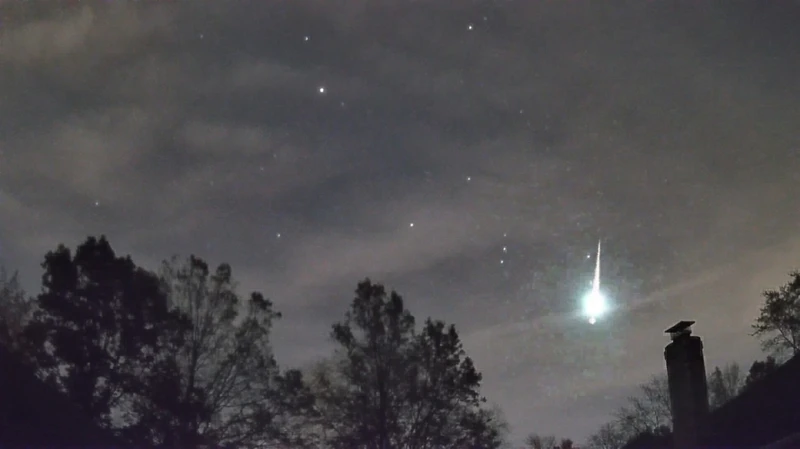
Throughout history, there have been several notable meteor shower events that have left researchers and witnesses baffled. One such event is the Perseid Enigma. The Perseid meteor shower occurs annually between July and August when the Earth passes through the debris left by the comet Swift-Tuttle. However, in certain years, the Perseids have shown unusual behavior. There have been reports of bright and colorful meteors, moving in erratic patterns or even changing direction. These unexplained occurrences have sparked numerous theories and speculations, ranging from extraterrestrial interference to atmospheric anomalies.
Another enigmatic meteor shower is the Leonid Mystery. The Leonids are associated with the comet Tempel-Tuttle and have been responsible for some of the most spectacular meteor storms in history. However, in 1833 and 1966, the Leonids put on exceptional displays that surpassed any previous observations. The meteor storms were intense, with thousands of meteors raining down per hour. The event in 1833 was so awe-inspiring that it was described as “stars falling from the sky.” The cause of such intense activity during these particular years has puzzled scientists, with theories revolving around unique orbital alignments and encounters with denser pockets of debris.
The Geminid Puzzle is yet another captivating meteor shower event. Unlike most meteor showers, which originate from comets, the Geminids originate from the enigmatic asteroid 3200 Phaethon. The Geminids are known for their slow, bright, and colorful meteors, which give the impression of moving in a controlled manner. This behavior goes against the typical characteristics of meteor showers and has raised questions about the nature of the 3200 Phaethon asteroid. Scientists theorize that the asteroid could have a higher level of activity, resembling a dormant comet, or that it is shedding smaller particles, resulting in the unique characteristics of the Geminid meteor shower.
These well-known strange meteor shower events continue to fascinate scientists and laypeople alike. The peculiarities observed during these events challenge our current understanding of meteor showers and raise intriguing questions about the nature of these celestial phenomena. While scientific explanations for these phenomena are being investigated, further research is needed to unravel the mysteries behind these unusual meteor shower events.
4.1 The Perseid Enigma
The Perseid meteor shower is one of the most eagerly anticipated events for astronomy enthusiasts around the world. However, it has also been the source of numerous enigmatic occurrences that have left experts puzzled. One of the main mysteries surrounding the Perseids is the occasional appearance of remarkably bright and slow-moving meteors. These meteors, known as fireballs, create dazzling streaks across the night sky that can last several seconds. The Perseid fireballs have captured the attention of scientists who are intrigued by their unusual characteristics. While most meteors are relatively small and burn up quickly, the Perseid fireballs are larger and have a slower descent through the atmosphere. This phenomenon has led to various theories and speculations about the origin of these extraordinary meteors. Some experts suggest that the fireballs may be remnants of a larger parent body that broke apart, while others propose that they could be the result of unusual atmospheric conditions that cause the meteors to decelerate. Despite decades of observation and research, the Perseid fireballs continue to be an enigma that intrigues astronomers and skywatchers alike. This captivating meteor shower will undoubtedly continue to inspire awe and curiosity as we strive to unravel the secrets behind its mesmerizing fireballs. For more intriguing insights into celestial phenomena, check out our article on unraveling ascendant signs in horoscopes.
4.2 The Leonid Mystery
The Leonid meteor shower is known for its spectacular displays, but it has also been the source of a mysterious phenomenon that has puzzled scientists for decades. One of the most perplexing aspects of the Leonid meteor shower is its unpredictability. While most meteor showers have fairly consistent activity levels from year to year, the Leonids have exhibited extreme variations in intensity. In some years, the Leonid meteor shower produces an incredible number of shooting stars, creating a breathtaking spectacle for observers. However, there have been other years when the shower is surprisingly weak, with only a few meteors visible. This irregular pattern has led to numerous theories and speculations. One possible explanation is related to the orbit of the parent comet, 55P/Tempel-Tuttle. This comet’s orbit brings it close to the sun, and during its close approach, it releases a significant amount of debris, resulting in abundant meteor activity. However, in years when the comet is further away, the amount of debris is reduced, leading to weaker meteor showers. Another theory suggests that the variation in activity could be influenced by the gravitational interactions between the Earth and other celestial bodies in the solar system. These interactions, such as the influence of planetary alignments, could either enhance or disrupt the debris stream and ultimately affect the intensity of the Leonid meteor shower. The mystery of the Leonid meteor shower continues to intrigue scientists and astronomers, and ongoing research aims to unravel the enigmatic patterns behind its unpredictable behavior. Understanding the underlying mechanisms of this shower could provide valuable insights into the dynamics of comets, meteoroids, and the complex interactions within our solar system.
4.3 The Geminid Puzzle
The Geminid meteor shower has long been a subject of fascination and curiosity among astronomers. What makes it especially intriguing is the fact that its origin remains somewhat of a puzzle. Unlike most meteor showers that are associated with the debris left behind by comets, the Geminids come from an object known as 3200 Phaethon, which is classified as a “rock comet” or “asteroid-comet hybrid”. This unique characteristic sets the Geminids apart from other meteor showers. Scientists are still trying to understand how an object primarily composed of rock can produce such a prolific meteor shower. One theory suggests that 3200 Phaethon might be an extinct comet that has lost most of its volatile materials, leaving behind a rocky core. Another theory proposes that the Geminid meteoroids might be the result of dust particles released from 3200 Phaethon’s surface due to thermal stress. This enigmatic nature of the Geminid meteor shower continues to spark scientific investigations and deepens our understanding of the complexities of our solar system. Observing the Geminids can be a breathtaking experience, as they are known for their bright, multicolored meteors and high rates of activity, often producing over 100 meteors per hour during peak times. Whether we unravel the exact origin of the Geminids or not, their annual display serves as a reminder of the mysteries that still await us in the vastness of space.
Conclusion

In conclusion, the realm of meteor showers holds both scientific explanations and unexplained phenomena that continue to intrigue and mystify us. Through our exploration of the science behind meteor showers, we have uncovered the fascinating process of Earth passing through the debris left by comets and asteroids. This process creates the awe-inspiring streaks of light we witness in the night sky. However, amidst the scientific understanding, there are also strange occurrences and patterns that defy conventional explanations. Eyewitness accounts of unusual characteristics during meteor shower events add to the intrigue and raise questions about what we know. Theories and speculations about extraterrestrial origins, time and space anomalies, and geomagnetic disturbances offer possible explanations for these unexplained phenomena. As we continue to delve into the mysteries of meteor showers, it is clear that there is much more to discover and understand. Whether it is through unraveling the enigma of strange meteor shower events or delving into the complexities of astrology and horoscopes (such as unraveling ascendant signs in horoscopes), our fascination with the cosmos and the unexplained will persist, driving us to seek answers and expand our knowledge of the universe we inhabit.
Frequently Asked Questions

1. What causes the radiant point of a meteor shower?
The radiant point of a meteor shower is caused by the perspective from which the meteors appear to originate. It is not the actual source of the meteors but rather a specific point in the sky from which they seem to radiate due to the Earth’s motion through space.
2. How can I best observe a meteor shower?
To observe a meteor shower, find a location away from city lights with a clear view of the sky. Set up a comfortable seating arrangement, dress warmly, and allow your eyes to adjust to the darkness. It is also helpful to use a star chart or a smartphone app to identify the radiant point and increase your chances of spotting meteors.
3. Are meteor showers dangerous?
Meteor showers themselves are not dangerous. The meteors burn up in the Earth’s atmosphere before reaching the ground. However, it is important to stay aware of your surroundings while observing meteor showers to prevent accidents or falls.
4. How often do meteor showers occur?
Meteor showers occur regularly throughout the year. Some showers have an annual occurrence, while others are more frequent or sporadic. The frequency and intensity of meteor showers can vary, so it’s worth checking an astronomical calendar or consulting a meteor shower tracker to know when and where to expect them.
5. Can you predict the exact number of meteors during a shower?
While astronomers can estimate the number of meteors per hour during a meteor shower, predicting the exact number is challenging. Various factors like the size and density of the debris trail, as well as the Earth’s position within the trail, influence the intensity of a meteor shower.
6. Are meteor showers visible in both hemispheres?
Most meteor showers are visible in both the northern and southern hemispheres, with some showers being more favorable in one hemisphere over the other. The key factor for visibility is the location of the radiant point in relation to your position on Earth.
7. How fast do meteors travel?
Meteors can travel at incredibly high speeds, entering the Earth’s atmosphere at velocities of 25 to 160 thousand miles per hour (40,000 to 260,000 kilometers per hour). The exact speed depends on the specific meteoroid’s size, angle of entry, and the gravity of Earth.
8. Can you hear the sound of meteors?
Meteors do not make sounds as they burn up in the atmosphere. However, very rarely, a particularly large or close meteor can create a sonic boom, generating a faint sound that might be heard on the ground.
9. How long do meteor showers last?
Meteor showers typically last for several days, with a peak period that lasts a few hours. The peak is when the most meteors are visible per hour. Before and after the peak, the meteor activity gradually increases or decreases, respectively.
10. Can I make a wish on a shooting star?
While it is a common tradition to make a wish when you see a shooting star, it is purely a superstition and has no scientific basis. However, it can be a fun and magical moment to embrace the whimsy of making a wish upon a meteor streaking across the sky.
References
Frequently Asked Questions

FAQs about Unexplained Phenomena: Strange Meteor Shower Events
Curious about strange meteor shower events and unexplained phenomena? Here are some frequently asked questions to shed some light on the subject:
1. What makes a meteor shower event strange?
A strange meteor shower event is characterized by unusual characteristics, patterns, or formations that defy conventional scientific explanations.
2. Can meteor showers occur at any time?
Meteor showers are typically associated with specific times of the year when the Earth passes through debris left behind by comets or asteroids. However, strange meteor shower events have been reported outside these expected periods.
3. Are there any noticeable differences between regular meteor showers and strange meteor shower events?
Strange meteor shower events often exhibit unique characteristics such as unusually bright or colorful meteors, erratic movement patterns, or the formation of distinct shapes or designs in the sky.
4. Have there been any documented cases of unexplained patterns or formations during meteor shower events?
Yes, there have been reports of strange meteor shower events where meteors appeared to align in geometric patterns or form recognizable shapes, which defy traditional explanations.
5. What do eyewitness accounts reveal about strange meteor shower events?
Eyewitnesses often describe witnessing unusual phenomena during strange meteor shower events, such as hearing unusual sounds accompanying the meteor sightings or experiencing temporary disruptions in electronic devices. These accounts add to the mystery surrounding these events.
6. Are there any theories regarding the extraterrestrial origins of strange meteor shower events?
Some speculate that these events could be the result of extraterrestrial activity, suggesting that the meteors may originate from unknown extraterrestrial objects or spaceships.
7. Could time and space anomalies be responsible for the occurrence of strange meteor shower events?
There’s a hypothesis that suggests these unusual events might be caused by temporary disruptions in the fabric of space and time, leading to the appearance of anomalies during meteor showers.
8. How do geomagnetic disturbances play a role in strange meteor shower events?
Geomagnetic disturbances caused by solar activity or other factors could potentially influence the behavior and characteristics of meteor showers, giving rise to strange phenomena that cannot be easily explained.
9. What is the Perseid Enigma?
The Perseid Enigma refers to the mysterious features associated with the Perseid meteor shower, including sudden bursts of activity, unexpected changes in the meteor’s appearance, and unexplained formations in the sky.
10. What is the Leonid Mystery?
The Leonid Mystery refers to the unexplained phenomena observed during the annual Leonid meteor shower, which include continuous meteor trains, intense meteor storms, and unpredictable variations in the shower’s intensity.
References
- Humans Have Feared Comets, Other Celestial …
- Strange phenomenon during Perseids meteor shower
- Quadrantid meteor shower: January’s first celestial event

